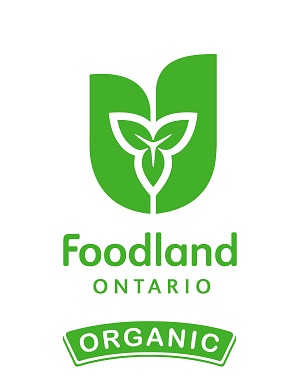Organic crop and livestock production in Ontario
Learn more about the requirements and practices for organic crop and livestock farming.
Overview
Farming organically is the decision to grow your crops and raise your livestock following specific requirements. Making the decision to farm organically is a personal choice.
Transitioning to organic production or starting to farm organically can be a long process with many challenges. It is important to research regulatory requirements, costs and certification before transitioning to or starting an organic farm.
Organic farming
The Canadian Organic Trade Association (PDF) estimated there were 926 certified organic producers in Ontario in 2020. Organic production in Ontario includes both certified and uncertified production. Starting an organic farm provides an overview of the requirements, processes and the planning needed to farm organically.
Oversight of certified organic products
If a food product, seed or animal feed is labelled as organic, it is regulated by the Canadian Food Inspection Agency (CFIA) under the Safe Food for Canadians Regulations. Products that are both produced and sold within provinces are regulated by provincial organic regulations where they exist. Oversight of organic labelling is through the federal Food and Drugs Act and the Safe Food for Canadians Act.
Contact a certification body for information on how to become certified.
Oversight of uncertified organic products
Growers of uncertified organic products in Ontario are subject to Section 5(1) of the Food and Drugs Act and Section 6(1) of the Safe Food for Canadians Act. This legislation requires accurate labelling and proof from farmers, manufacturers and/or sellers that the product is organic. It is a federal criminal offence to engage in false labelling, including labelling a product organic when it is not. Further information on organic claims on food labels can be found on the CFIA website.
To be compliant with Section 5(1), it is advised that the seller of uncertified organic products contact the CFIA at the Ask CFIA service.
For uncertified organic products, the CFIA uses the standard regulatory response process to guide its enforcement actions.
Foodland Ontario organic logo
Foodland Ontario is a consumer promotion program of the Ontario Ministry of Agriculture, Food and Rural Affairs. It was established in 1977, and since then, has partnered with Ontario’s agri-food sector to champion and drive consumer propensity to anticipate, identify and choose Ontario foods first.
In 2011, the ministry worked with the Organic Council of Ontario to launch the Foodland Ontario organic logo. Businesses can use this logo at no cost to identify their organic food products that are grown or produced in Ontario.
Currently, over 50 businesses are using the Foodland Ontario organic logo on their packaging or other marketing materials covering all different categories, including produce, protein, dairy, eggs, grains, maple syrup and honey. In retail grocery stores, some businesses are also permitted to use the organic logo on their packaging or shipping cartons and some retailers also use the organic logo to identify Ontario organic products in their weekly flyers.

To use the Foodland Ontario organic logo, a business must demonstrate that their product(s) meet the consumer and industry approved definition of Ontario food products and provide documentation that their product(s) is recognized as organic by the Canadian Organic Standards.
Further, a business must also identify how they intend to use the logo, such as on their packaging or labels. If a business’s product(s) meets the above criteria, they will be sent a licensing agreement to complete and return. If approved, a business will be provided with the organic logo artwork and a Brand Standards Guide that advises how to use the Foodland Ontario logo.
Organic livestock production
Raising or transitioning to organic livestock production takes time and consideration. Access to organic breeding stock, pasture and crops, housing requirements, management, environmental conservation, safety and profitability are all factors to be considered. Each commodity has specific husbandry requirements. Check with the certification body for specific standards. Milk producers should also contact the Dairy Farmers of Ontario for more information.
The following fact sheets provide an overview of how to raise livestock organically:
- Organic beef production in Ontario
- Organic dairy production in Ontario
- Organic pork production in Ontario
- Organic poultry production in Ontario
- Organic sheep production in Ontario
Organic crop production
According to the Canada Organic Trade Association’s 2018 report, the total organic acreage in Ontario is approximately 161,970 acres.
Factors to consider when growing organic crops are access to organically produced and GMO-free seed or plant material and managing soil nutrition and structure without the use of synthetic inputs. It is important to be aware of pest complexes for specific crops and the cultural and chemical tools permitted for use under the Canada Organic Standards.
An important aspect of organic crop production is the transition period leading to certification. The Transition to organic crop production fact sheet outlines the steps and process to become a certified producer. The Canada Organic Standards requires land to be managed according to the organic standards for 36 months prior to harvest of the first organic crop.
Organic pest management
Organic pest management requires planning and patience. There are limited organic pest control products approved for use in Canada, meaning other methods of pest management must be heavily relied on.
Some methods to manage pest complexes include:
- crop rotation
- maintaining high levels of biodiversity
- intercropping
- strategic planting
- variety of choice
- planting cover crops
Effective pest management takes time to develop on an organic farm, and organic growers often implement multiple strategies over many years to prevent specific pest issues.